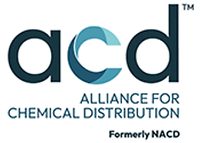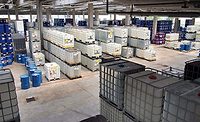Chemical Legislation - Panic or Practicality?

Historical Perspective
In the early years, some adhesives and most coatings had to meet severe fire-retardance tests. Adhesives, being sandwiched between two substrates, and therefore having less exposed surface, were faced with far fewer and less stringent restrictions than coatings. Flame-retardant additives were, for the most part, expensive, calling for judicious use of the products, using just enough to meet the requirements.
In those years, Monsanto had a marvelous chlorinated resin/plasticizer/fire retardant series trade named Arochlor. Available in both liquid and solid forms, covering a multitude of melting points and a broad range of chlorine contents, these resins imparted flame retardance to a host of varied products. Soluble in many organic solvents, they could be added directly to solvent systems. They could also be emulsified for addition to water-based systems. Formulations could be modified with these resins to meet the most stringent test requirements.
Distillation, an important procedure in the course of the manufacture of each Arochlor resin, resulted in a dark, residual, high chlorine content still bottom as a by product requiring disposal. For years, these still bottoms were buried at various sites, until someone decided to market them as cheap, chlorinated fire-retardant resins. They could be coupled with asphalt to make low-cost, fire-retardant roof coatings, whereas previous efforts to fire retard inexpensive asphalts were cost prohibitive. Suddenly, the still bottoms became a series of marketable products rather than a landfill. These became the Montar series of resins.
Those of you in the industry at the time probably recall the publicity surrounding the sudden, mysterious decline in the peregrine falcon population. Apparently, something was responsible for the incomplete formation of the falcon eggshells, leaving them thin and extremely vulnerable to breakage. This was ultimately traced to residual quantities of these chlorinated resins.
These were the polychlorinated biphenyls and polychlorinated polyphenyls that became so notorious under the general designation PCBs. When they were withdrawn from the marketplace, they left a tremendous void, which formulators found difficult to fill.
Filling the Fire-Retardant Gap
One product that appeared to be a reasonable candidate to fill the void was Firemaster T23P, from Michigan Chemical Corporation. This excellent fire retardant was so good, in fact, that it was used to flame retard textiles, some of which were used in the manufacture of children’s pajamas. As a result of some dermatological reactions, a question arose as to the possible carcinogenicity of T23P. Some of you may remember the “Tris” fiasco, which resulted in yet another flame retarding compound being removed from the marketplace.
Antimony oxide coupled with chlorinated hydrocarbon resins is, to a great extent, filling the void … for now.
Other Legislative Efforts/Effects
Paints and other exterior coatings were, for years, color matched to the recognized standards of the various companies whose plants and manufacturing sites they adorned. Lead and chromate pigments which, among others, gave the formulator the versatility of color matching coatings to any desired shade, were deemed hazardous and removed from the market.
Mercurial preservatives, the most effective fungicides and bactericides in the world, were viewed as being hazardous, and were, therefore, removed from the marketplace. Their replacements initially resulted in inferior end products, with higher raw material costs.
We can go back as far as 1966, when Los Angeles enacted Rule 66 and San Francisco passed Regulation 3. Both severely limited the use of “photoreactive” solvents, such as xylene, in adhesives and coatings in order to reduce smog generation. Then came a major trend going from products in “dangerous, highly flammable” solvents such as hexane, acetone and toluene to the “safer” non-flammable chlorinated solvents. In that span of time, the legal, Department of Transportation definition of a “flammable liquid”, i.e., one requiring the red, diamond shaped “Flammable Liquid” warning label, went from one having less than an 80 °F flash point to one having less than a 100 °F flash point. To add to the confusion, IATA (International Air Transport Association) regulations define a flammable liquid as one having a flash point below 140 °F. Today, the cry is for the elimination of ODS (ozone-depleting solvents) such as 1,1,1-trichloroethane and the “toxic/carcinogenic” chlorinated solvents such as methylene chloride.
Then came the mother of them all … asbestos. As a raw material in adhesives and coatings, asbestos was unique. It is flame retardant, acid and alkali resistant, weather resistant, it is an insulation, a thixotrope, a film reinforcer and … it was CHEAP.
For decades asbestos was used in adhesives and coatings in a multitude of applications from mobile home roofs to ceramic tile adhesives. It was also used in automotive brake linings, as building insulation, in high-temperature protective gloves and fire-protective clothing. In short, it found a place in virtually every industry.
In 1962, Dr. Irving Selikoff, Director of the Environmental Services Laboratory at the Mt. Sinai School of Medicine in New York, was hired by New York Local 12 and Newark Local 32, International Association of Heat and Frost Insulators and Asbestos Workers’ Union to examine the overabundance of asbestos-related illnesses in union members. Dr. Selikoff found an apparent link between asbestos exposure and the incidence of lung cancer, asbestosis and mesothelioma.
Although asbestos was a primary raw material in the products of such prestigious organizations as National Starch, GAF, PPG, 3M, HB Fuller, etc., the panic resulting from Dr. Selikoff’s report fomented government legislation that placed the entire asbestos industry in jeopardy.
The fact that the large majority of these cases stemmed from overexposure to the dense fogs of airborne asbestos fibers so common in the World War II shipyards of 20 years prior, did absolutely nothing to mitigate the general panic and concern regarding asbestos. Rather, it fostered a whole new, highly regulated, exceptionally lucrative industry … asbestos abatement.
OSHA
In 1970, the Williams Steiger Act was passed into law. This ultimately became the Occupational Safety and Health Act (OSHA). Under OSHA requirements, employers must maintain a complete and accurate Material Safety Data Sheet (MSDS) for each hazardous material that is used in the facility.
The MSDS is a detailed information bulletin prepared by the manufacturer, which describes the physical and chemical properties, physical and health hazards, routes of entry, precautions for safe handling and use, emergency and first aid procedures and control and disposal methods, for each product. An MSDS must accompany each shipment of hazardous or potentially hazardous material.
OSHA 174, preceded by OSHA Form 20, is a simple, easy-to-read and understand two-page affair. Although OSHA specifies the information to be included in an MSDS, it does not prescribe the precise format. The result has been completely worthless and totally incomprehensible 20- and 30-page documents, serving no purpose other than to comply with the letter of the law.
In no possible way could a police officer, confronted with a spill of a hazardous substance, quickly and easily take the necessary emergency measures to reduce the hazard by reading the MSDS accompanying the shipment. He wouldn’t be able to locate the pertinent information, let alone comprehend it. This is very definitely self-protective overkill sponsored by government legislation.
Something would certainly appear to be very wrong with government legislation when it is easier to purchase an assault weapon than it is to buy a few drops of cyclamate to sweeten your coffee.
Comments may be directed to Dr. Marks at jmarks@gpnorth.com.
Looking for a reprint of this article?
From high-res PDFs to custom plaques, order your copy today!







